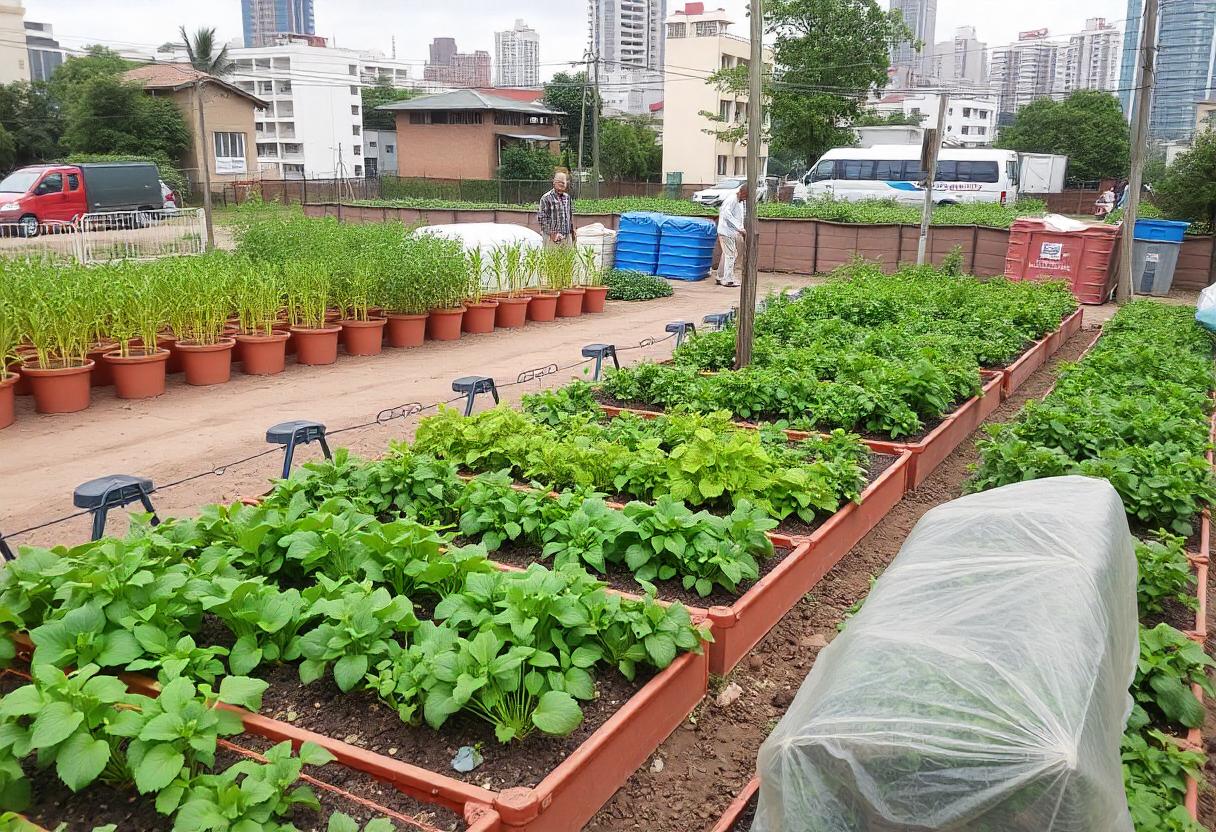
Urban agriculture, the practice of cultivating, processing, and distributing food in or around urban areas, is transforming how cities address food security, sustainability, and community engagement. As cities continue to expand and populations grow, urban agriculture is emerging as a vital strategy to create resilient and self-sufficient urban environments.
The Rise of Urban Agriculture
Historically, agriculture was predominantly rural, with cities relying on rural areas to supply food. However, as urban populations have surged, the distance between food sources and consumers has increased, leading to a range of challenges, including food insecurity, high transportation costs, and environmental degradation. Urban agriculture offers a solution by bringing food production closer to urban centers, reducing the carbon footprint associated with food transportation, and enabling local food systems to thrive.
Types of Urban Agriculture
Urban agriculture can take many forms, each tailored to fit the unique characteristics and needs of urban environments:
- Community Gardens: These are shared plots of land where community members grow vegetables, fruits, and herbs. Community gardens foster social cohesion, provide educational opportunities, and improve access to fresh produce, particularly in food deserts where grocery stores are scarce.
- Rooftop Gardens: Utilizing the unused space on building rooftops, rooftop gardens can grow a variety of crops, from leafy greens to tomatoes. They help reduce the urban heat island effect, improve air quality, and offer insulation benefits for buildings.
- Vertical Farming: This innovative method involves growing crops in vertically stacked layers or towers, often in controlled environments like greenhouses or indoor farms. Vertical farming maximizes space efficiency and can produce high yields in small urban areas.
- Hydroponics and Aquaponics: These soilless farming techniques use nutrient-rich water to grow plants. Hydroponics involves growing plants in a water-based solution, while aquaponics combines hydroponics with aquaculture (fish farming), creating a symbiotic environment where fish waste provides nutrients for plants, and plants help filter the water for fish.
- Urban Orchards: These involve planting fruit trees and shrubs in urban areas, including parks and vacant lots. Urban orchards provide fresh fruits, enhance green spaces, and contribute to urban biodiversity.
Benefits of Urban Agriculture
Urban agriculture brings a range of benefits to cities and their residents:
- Food Security: By producing food locally, urban agriculture helps reduce reliance on external food sources, mitigating the risks associated with supply chain disruptions and increasing access to fresh, nutritious food.
- Environmental Impact: Urban farms reduce the carbon footprint associated with transporting food long distances. They also contribute to green spaces, enhance biodiversity, and help manage urban runoff by absorbing rainwater.
- Economic Opportunities: Urban agriculture creates job opportunities in farming, processing, and distribution. It can also stimulate local economies by supporting small businesses and fostering entrepreneurial ventures.
- Community Engagement: Urban farms and gardens serve as community hubs, where residents can collaborate, learn about food production, and engage in environmental stewardship. They also promote healthier lifestyles by providing access to fresh produce and encouraging physical activity.
- Education and Awareness: Urban agriculture provides educational opportunities for people of all ages to learn about food production, sustainability, and nutrition. Schools and community organizations often use urban farms as living classrooms to teach students about science, ecology, and healthy eating.
Challenges and Considerations
Despite its many benefits, urban agriculture faces several challenges. Limited space, zoning regulations, and access to resources can pose obstacles to establishing and maintaining urban farms. Additionally, issues related to soil contamination, water use, and the need for specialized knowledge and skills require careful planning and management.
Innovations and Future Directions
Advancements in technology and research continue to drive innovation in urban agriculture. Developments in automation, data analytics, and sustainable practices are enhancing the efficiency and scalability of urban farming methods. As cities look to the future, urban agriculture will play a crucial role in building more sustainable, resilient, and self-reliant urban environments.